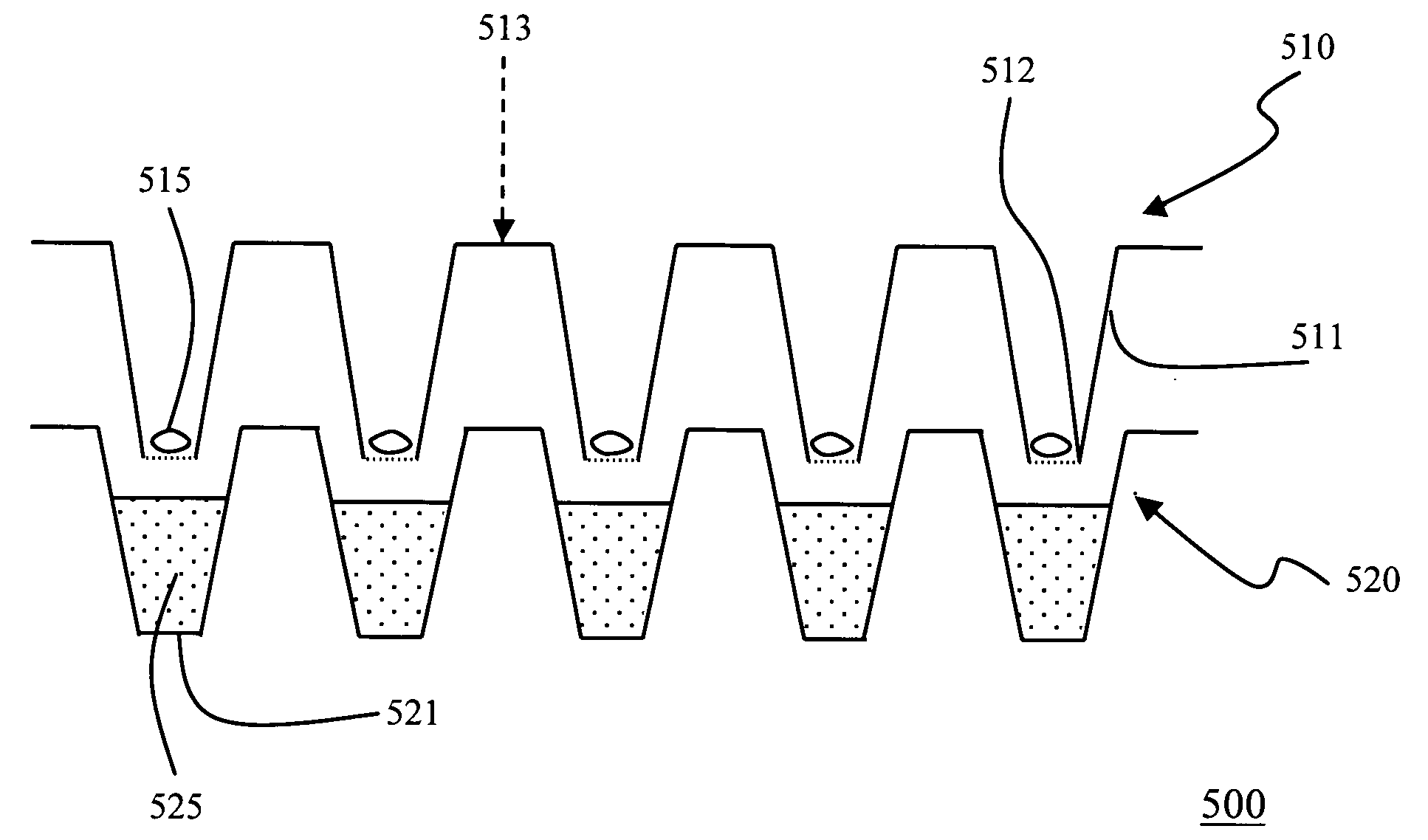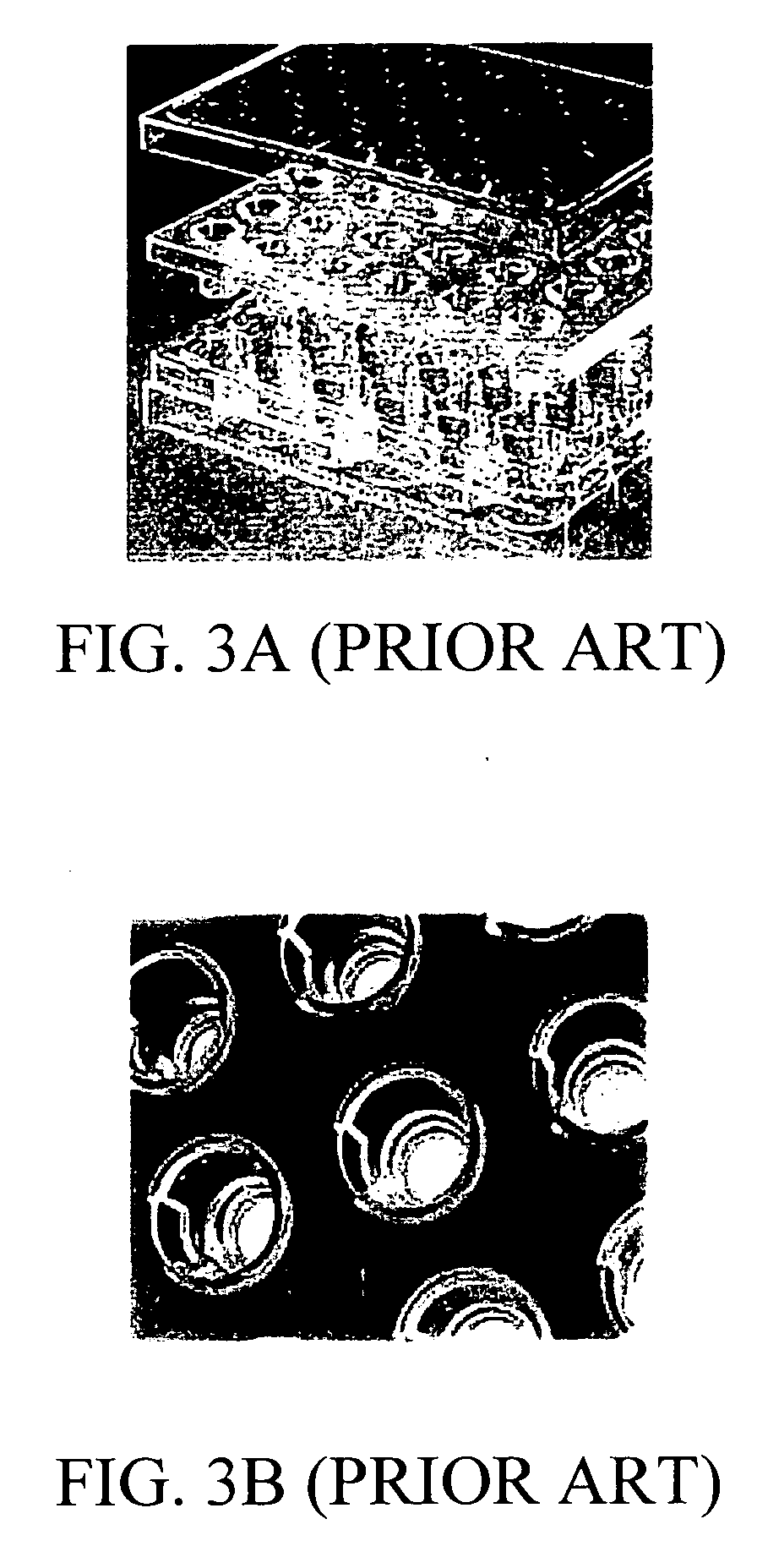Meshwell plates
a technology of meshwell plates and meshwells, applied in the field of meshwell plates, can solve the problems of wasting reagent/solution, unable to hold and transfer multiple holders at the same time, and unable to meet the requirements of laboratory glassware, etc., to achieve rapid and reproducible high-throughput processing. , the effect of high-throughput processing
- Summary
- Abstract
- Description
- Claims
- Application Information
AI Technical Summary
Benefits of technology
Problems solved by technology
Method used
Image
Examples
Embodiment Construction
[0022] Several techniques are currently used by laboratory investigators to process tissue samples. One technique involves the use of forceps to transfer the specimens from one solution to another. Because forceps may damage the specimens, this is not a desired technique.
[0023] Another technique, known as the centrifuge tube technique, requires pipetting one solution onto the specimens in a centrifuge tube and then aspirating it off, which may cause some loss of specimens. Specifically, for each step, each individual tube must be picked up, opened, one solution aspirated off carefully to maximize solution removal while minimizing damage / loss of tissue / organisms, another solution added, and the tube must be closed and finally put down again.
[0024] To process a large number of small organisms / tissue samples, such technique is not only tedious and inefficient, but also error prone and slow. Even assuming an investigator can work fast enough to spend an average of 5 seconds per tube t...
PUM
 Login to View More
Login to View More Abstract
Description
Claims
Application Information
 Login to View More
Login to View More - R&D
- Intellectual Property
- Life Sciences
- Materials
- Tech Scout
- Unparalleled Data Quality
- Higher Quality Content
- 60% Fewer Hallucinations
Browse by: Latest US Patents, China's latest patents, Technical Efficacy Thesaurus, Application Domain, Technology Topic, Popular Technical Reports.
© 2025 PatSnap. All rights reserved.Legal|Privacy policy|Modern Slavery Act Transparency Statement|Sitemap|About US| Contact US: help@patsnap.com



